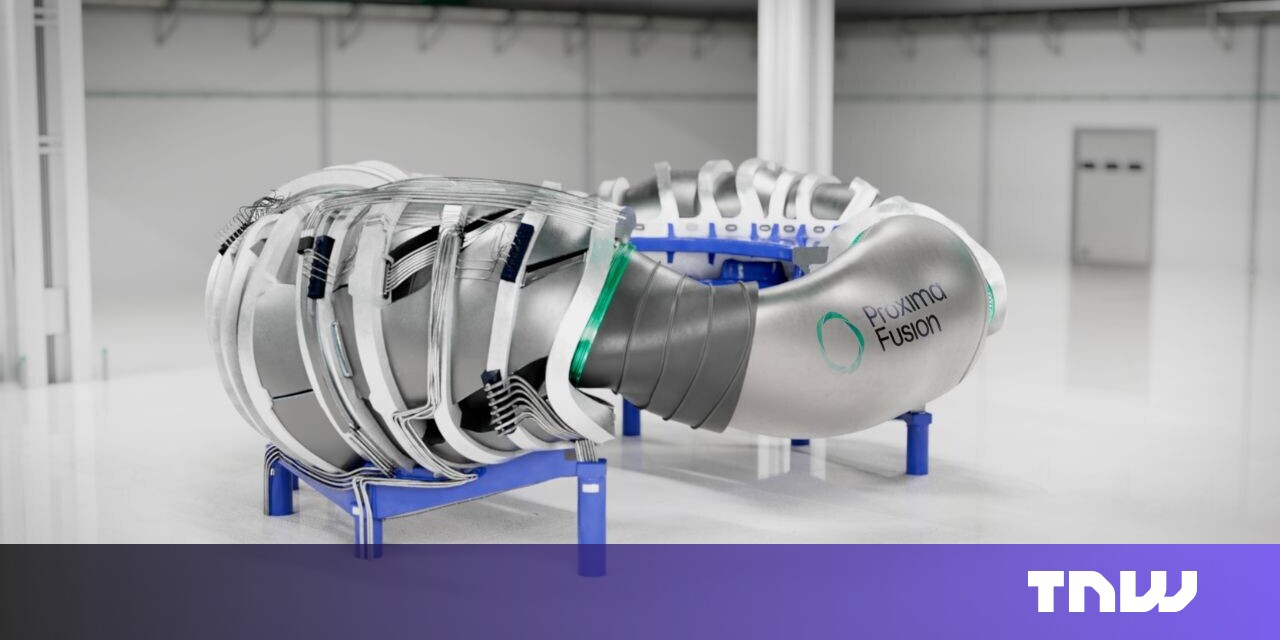European VCs just made a record bet on this fusion energy underdog

Two years ago, German startup Proxima Fusion emerged from stealth with big ambitions to make a little-known stellarator fusion machine a serious contender in the race for commercial fusion energy.
Today, the Munich-based company secured Europe’s largest-ever private investment in fusion power — a €130mn Series A funding round from big-name investors including Balderton Capital, Cherry Ventures, and Plural.
Daniel Waterhouse, partner at Balderton Capital, said he now thinks Proxima has taken its place as the leading “European contender” in the global race to commercial fusion.
Proxima was the first company to spin out from the Max Planck Institute of Plasma Physics in Germany. The company’s stellarator machine holds superheated plasma in place using twisted magnetic fields, creating the conditions for atom-fusing fusion reactions to occur.
Many fusion projects today use a different machine called a tokamak, which relies on symmetrical, doughnut-shaped magnetic fields. This technology is at the heart of major international projects such as ITER in France and is popular among well-funded startups such as the US’ Commonwealth Fusion Systems and the UK’s Tokamak Energy.
Stellarators are more complex to build, but have several advantages over tokamaks. They need less power to operate, and their twisted shape makes the plasma within easier to control. Theoretically, they can operate continuously without requiring breaks.
Francesco Sciortino, co-founder and CEO of Proxima Fusion, told TNW that he believes stellarators are the only fusion technology that guarantees continuous operation, an essential feature for future fusion reactors.
“While they are harder to design, we believe that stellarators will leapfrog tokamaks because they are easier to operate and are more suitable for power plants,” he said.


First conceived in the 1950s, stellarators were largely shelved due to their sheer engineering complexity. However, advances in AI-powered simulations are helping Proxima overcome some of those design challenges.
Ian Hogarth, partner at Plural, an early investor in Proxima, believes the startup’s stellarator design has opened the door for Europe to lead in fusion technology.
“Their peer-reviewed stellarator power plant design concept confirms that fusion really can be commercially viable, and creates an opportunity for Europe to be first to the target,” he said.
Proxima aims to complete its first demo device, Alpha, in just six years. The machine will lay the foundation for Stellaris, a 1GW fusion reactor which the company hopes will power up sometime in the 2030s. But it’s not the only one looking to write a stellarator redemption story.
Across the Atlantic, Bill Gates-backed Type One Energy is also pursuing bold plans to commercialise the stellarator. Like Proxima, Type One recently unveiled peer-reviewed designs for a fusion energy reactor. The company, which spun out of the University of Wisconsin-Madison, also plans to switch on its first commercial-scale machine sometime in the 2030s.
The pair are just two of dozens of startups across the world looking to build fusion energy reactors within a similar time frame. Some, such as Helion Energy and Commonwealth Fusion, have raised over $1bn apiece.
While the ambitions of fusion energy companies should be taken with a pinch of salt, they’re not necessarily unrealistic. Over 70% of experts believe we’ll have a fusion device powering the grid by 2035, a Fusion Industry Association survey found last year.
If those predictions come to pass, fusion could become an important part of Europe’s renewable energy mix — and one with distinct advantages. Unlike wind or solar, fusion would provide continuous power. Unlike fossil fuels, much of which is imported from countries like Russia and the US, fusion is clean and could be homegrown, boosting energy security.
However, with the US leading in private investment in fusion energy, Sciortino fears that Europe may lose its advantage and urged governments to support emerging startups.
“This is an important moment for Europe — a moment when we have the chance to make choices that will define the coming decades, and a chance to seize the lead in the global race to commercial fusion,” Sciortino previously told TNW. “Europe cannot afford to squander the opportunity; it must invest in companies that are working towards our continent’s energy security and sovereignty.”
Want to discover the next big thing in tech? Then take a trip to TNW Conference, where thousands of founders, investors, and corporate innovators will share their ideas. The event takes place on June 19–20 in Amsterdam and tickets are on sale now. Use the code TNWXMEDIA2025 at the checkout to get 30% off.
If you liked the article, do not forget to share it with your friends. Follow us on Google News too, click on the star and choose us from your favorites.
If you want to read more like this article, you can visit our Technology category.